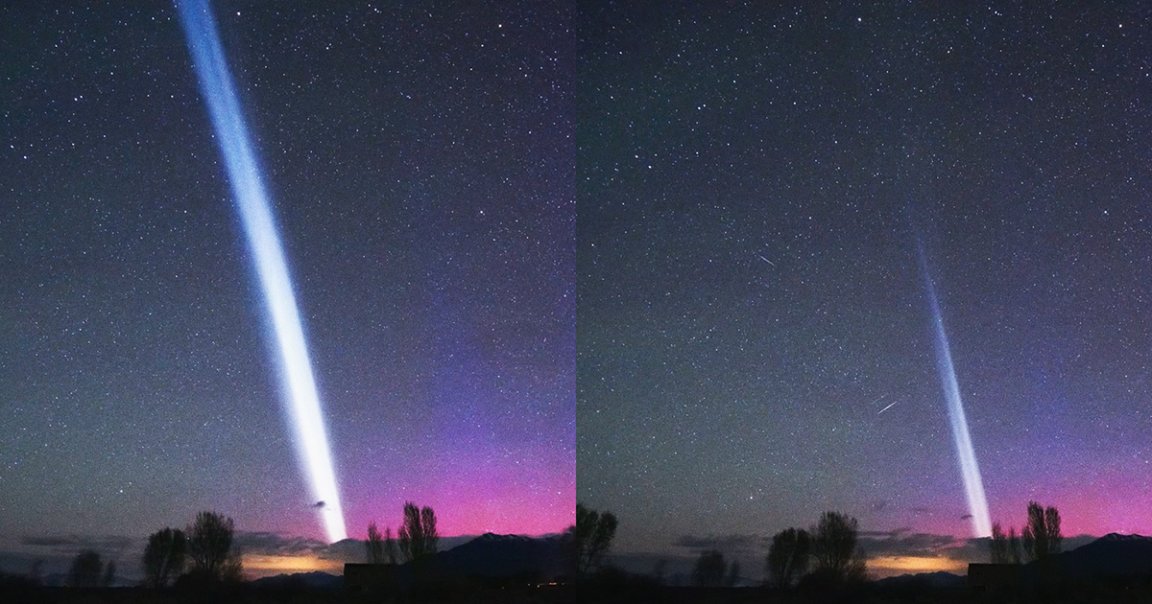
Across the American West, a massive glowing streak appeared in the skies last weekend — and an experimental rocket fuel seems to have been its source.
As Live Science reports, the spectacular light show was almost certainly the result of spent fuel from ZhuQue-2E, a rocket from the Chinese startup Landspace that used a methane-based fuel known “methalox” as its upper stage burned.
Launched on May 17, the rocket took off from the Jiuquan Satellite Launch Center in northwest China. On the other side of the Pacific Ocean, a mega-bright streak was seen over at least seven American states — Colorado, Idaho, Missouri, Nebraska, New Mexico, Utah, and Washington — and skywatchers online began speculating about what could have caused it.
Around that same time, the Space Weather blog noted that the radiant tails were likely from the Chinese rocket. Harvard astrophysicist Jonathan McDowell later confirmed, per his own measurements, that the source of the “unusual luminous cloud” seen out west was from a ZhuQue-2E “fuel dump at the upper stage.”
As footage from the incredible spectacle shows, the massively bright streak lit up the entire night sky, which in some areas was already illuminated by auroras from a geomagnetic storm that just so happened to have occurred at the same time.
Soon after the rocket made it to space, skywatchers began posting amazing footage of the mega-bright glowing streak — and as SpaceWeather noted at the time, those radiant streaks also took place during an aurora, which was caused by a geomagnetic storm that happened at the time same time.
In the so-called “Methane Race to Orbit,” Landspace scored a massive goal for its home country back in 2023, when it became the first company to successfully launch a rocket — another ZhuQue-2E, and its second such attempt — using methalox.
In subsequent years, the American companies United Launch Alliance and Blue Origin became the second and third to launch spacecraft into orbit using the methane-based fuel, which is lauded by experts as far cleaner than the standard RP-1 kerosene that produces carbon dioxide when burned.
In a prior interview with SpaceNews, rocket propulsion expert Filippo Maggi explained that although methane is, like CO2, also a greenhouse gas, it burns cleaner than RP-1 — and provides more energy, too.
“If you produce a good propulsion unit, the efficiency of that unit can be as high as 99.5 percent,” Maggi told the site back in 2021. “That means that the residues of methane would be basically zero. You might have some carbon monoxide released instead of carbon dioxide. But that would be very little.”
More on China’s space case: Mysterious Bacteria Not Found on Earth Are Growing on China’s Space Station